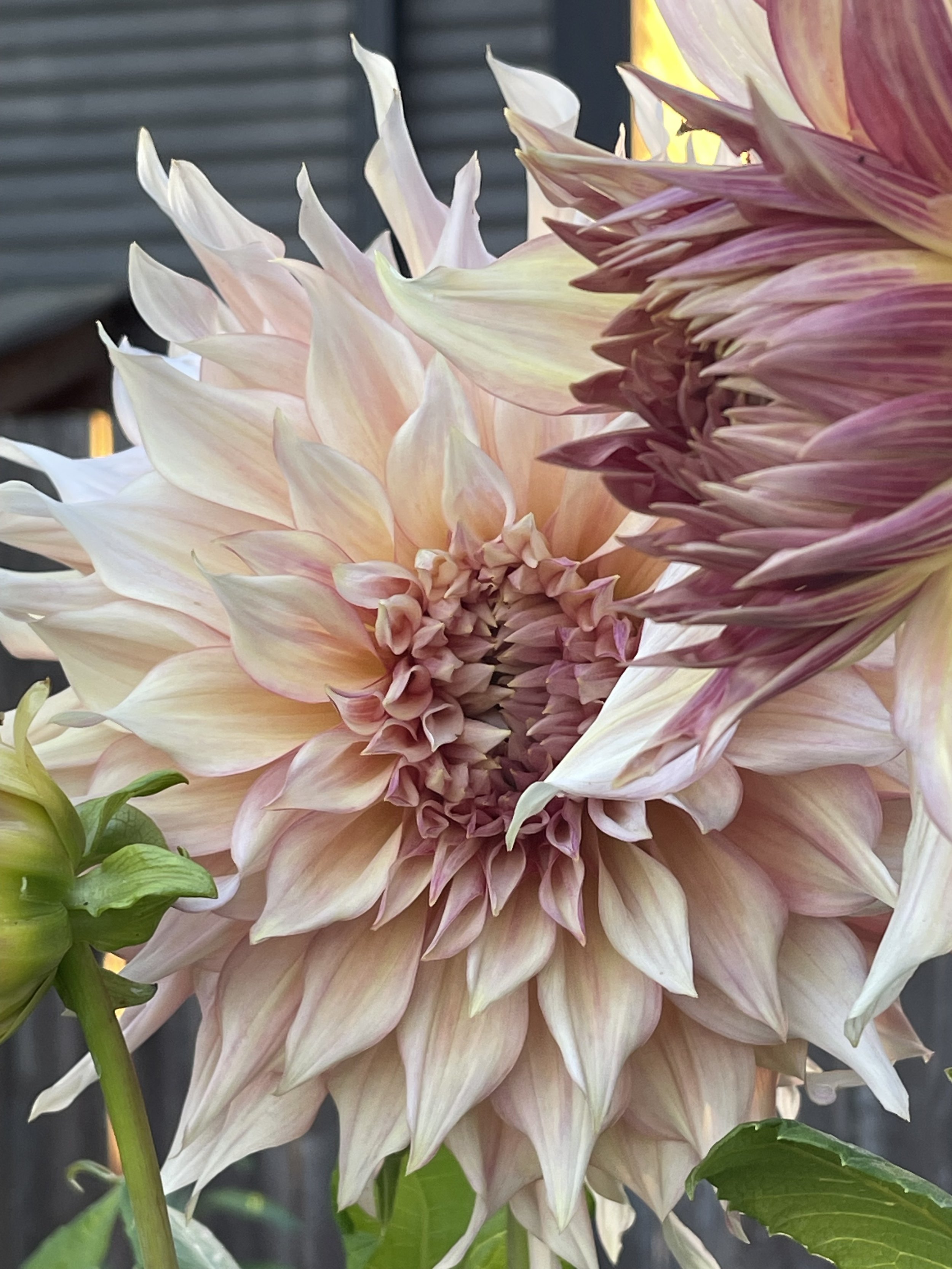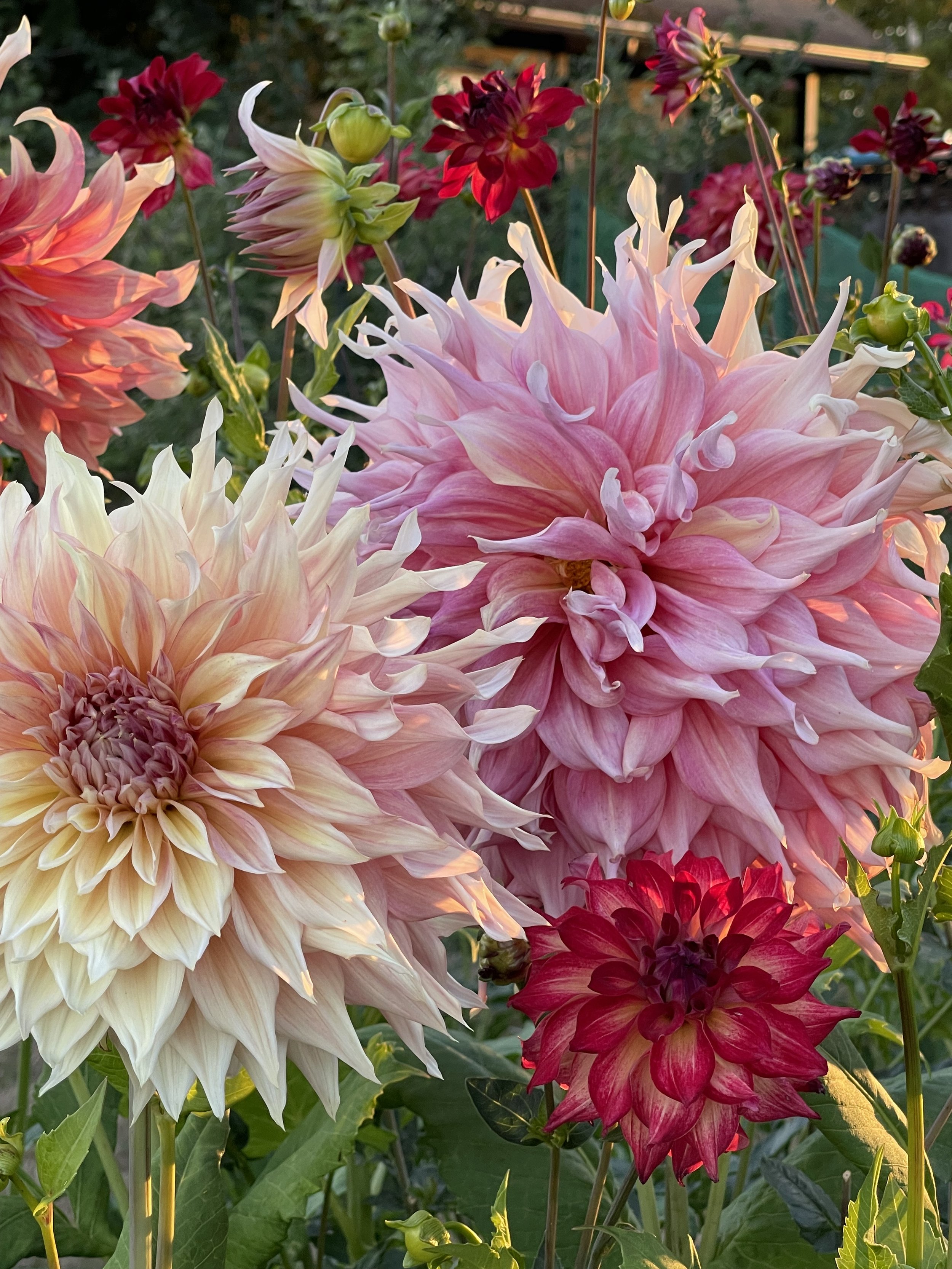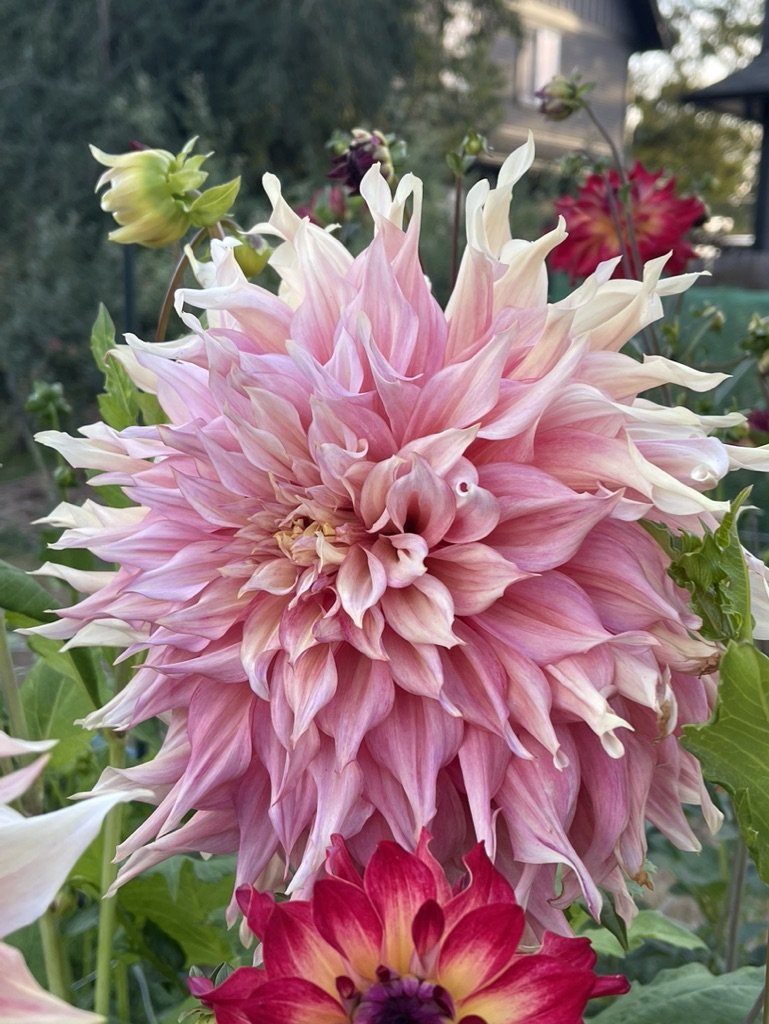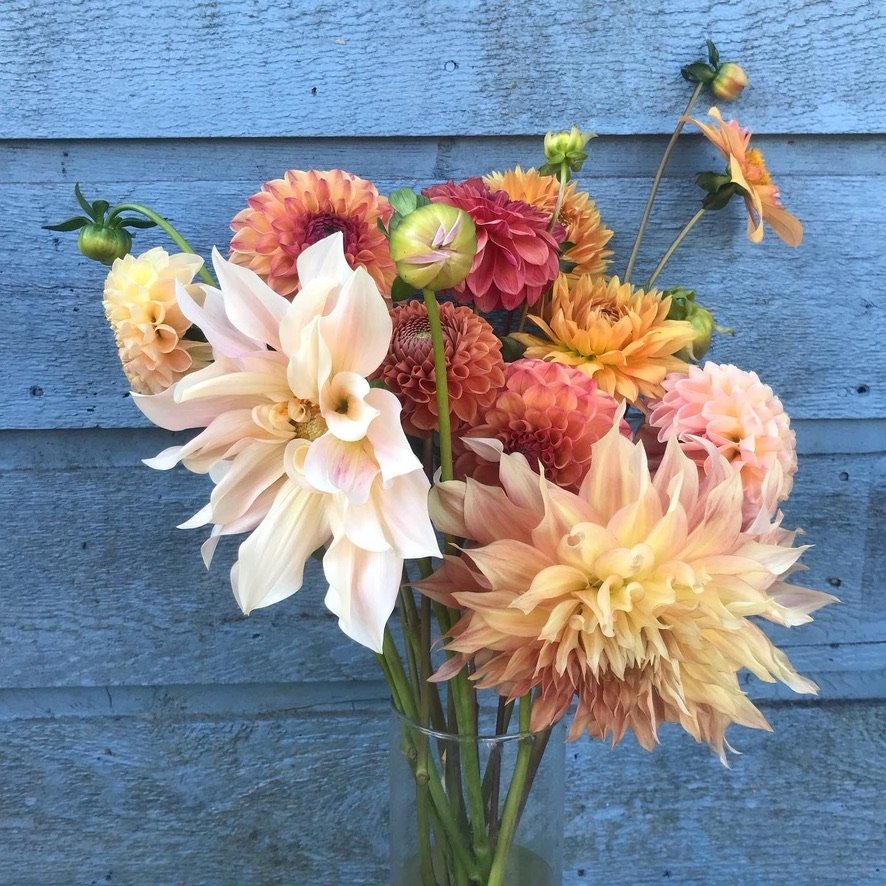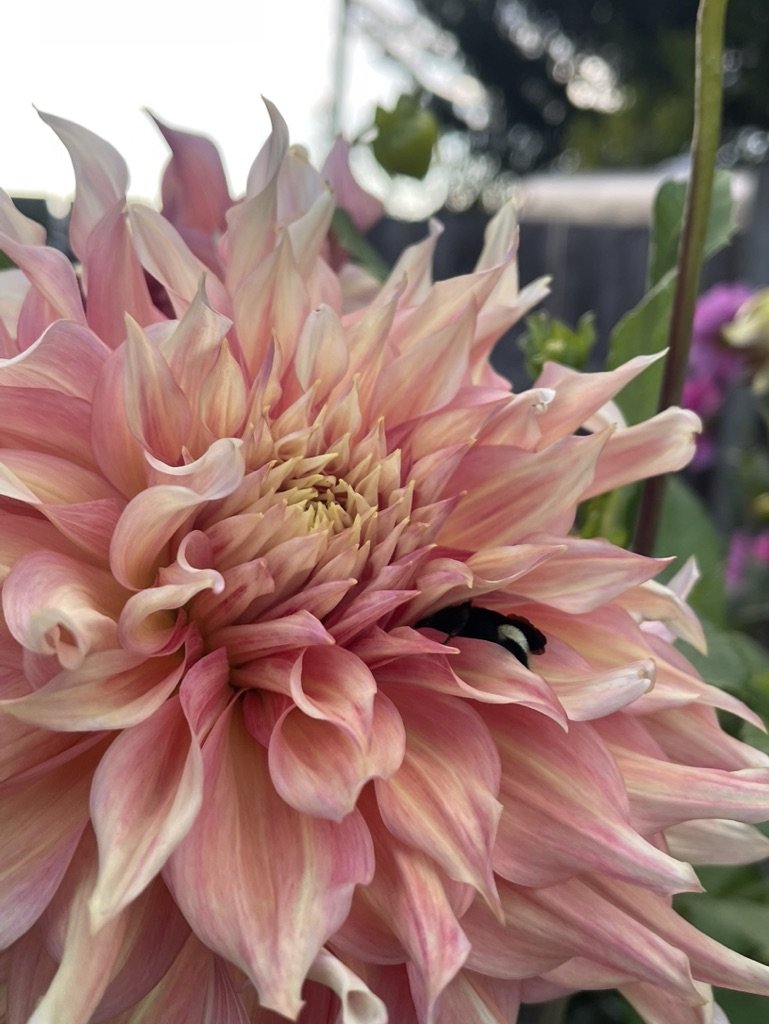Penhill Watermelon
ADS: 0110, AA, ID, LB
Height: 4’
Bloom: 6-12”
Notes: Penhill Watermelon is a strong, tall Dahlia with large, dinner plate size blooms. For smaller blooms to use in bouquets, plant 12” apart and cut deeply into the plant when harvesting. Flowers are a swirly, tousled, romantic blend of peach, pale watermelon, rose, and gold. Perfect for a ‘sunset’ colour palette. This cultivar is also an exhibition show dahlia of note, introduced in 2000, and the winner of 30 awards in North American Dahlia shows in 2022.
ADS: 0110, AA, ID, LB
Height: 4’
Bloom: 6-12”
Notes: Penhill Watermelon is a strong, tall Dahlia with large, dinner plate size blooms. For smaller blooms to use in bouquets, plant 12” apart and cut deeply into the plant when harvesting. Flowers are a swirly, tousled, romantic blend of peach, pale watermelon, rose, and gold. Perfect for a ‘sunset’ colour palette. This cultivar is also an exhibition show dahlia of note, introduced in 2000, and the winner of 30 awards in North American Dahlia shows in 2022.
ADS: 0110, AA, ID, LB
Height: 4’
Bloom: 6-12”
Notes: Penhill Watermelon is a strong, tall Dahlia with large, dinner plate size blooms. For smaller blooms to use in bouquets, plant 12” apart and cut deeply into the plant when harvesting. Flowers are a swirly, tousled, romantic blend of peach, pale watermelon, rose, and gold. Perfect for a ‘sunset’ colour palette. This cultivar is also an exhibition show dahlia of note, introduced in 2000, and the winner of 30 awards in North American Dahlia shows in 2022.
For best results, grow your dahlias in a sunny spot, with fertile, well-drained soil. Stake flowers for support and deadhead/ harvest blooms regularly. This will encourage the plant to keep producing flowers. Lift tubers after the first frost and store them in a cool, dry place where they won’t freeze. In March, they can be potted up and kept in a temperate greenhouse before planting out, or tubers can be planted directly into the garden after the risk of frost has passed. We plant directly into prepared beds, with a handful of organic fertilizer into each hole. Once planted, the tubers do not need water until shoots have emerged from the soil, as it can cause them to rot. Once they get growing, they will need regular watering, approximately every three days or more if the weather is hot.


